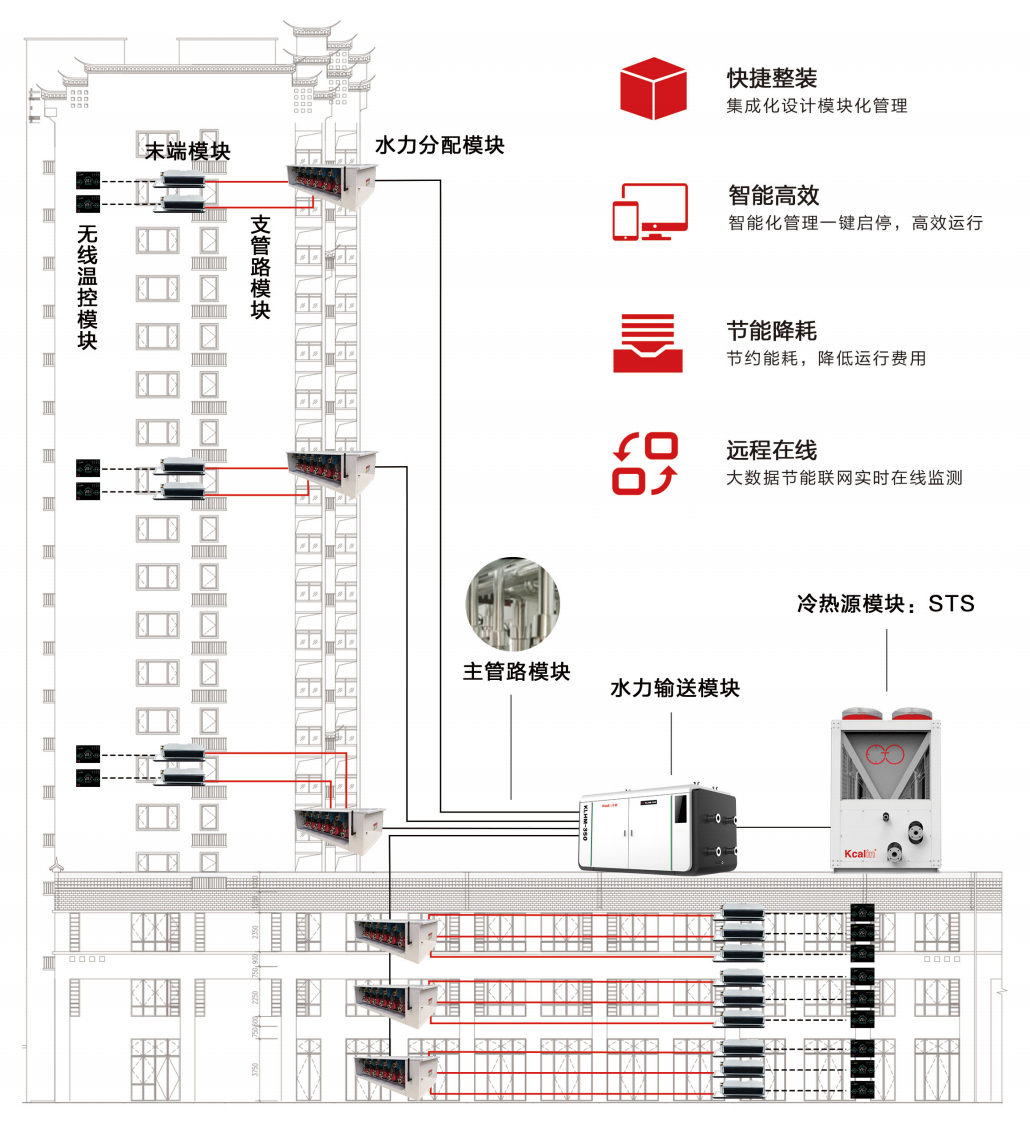In today's society, environmental protection and sustainability have become one of the key concerns of the construction industry. In order to cater to this trend, more and more commercial buildings are turning to green and efficient heating systems. As an environmentally friendly and energy-saving heating technology, air source heat pumps are gradually emerging in the field of commercial buildings.
Air source heat pump is a heating technology based on the principle of reverse thermodynamic cycle, which provides clean and renewable energy for heating by absorbing heat from external air. Its working principle is simple and efficient, making it an ideal technology to replace traditional heating systems.
The advantages of air source heat pumps in commercial buildings
Environmental Protection and Sustainability: Air source heat pumps do not rely on traditional coal or gas, but instead utilize the thermal energy present in nature to reduce dependence on non renewable energy, lower carbon footprint, and achieve green and environmentally friendly heating processes.
High energy efficiency and low operating costs: Compared to traditional heating systems, air source heat pumps have higher energy efficiency and can operate efficiently even at relatively low temperatures. This not only reduces energy consumption, but also reduces operating costs, providing an economical heating solution for commercial buildings.

Flexibility and adaptability: Air source heat pumps are suitable for various climate conditions and are not limited by geography. Its flexibility makes it an ideal choice for commercial building heating systems, enabling stable and efficient operation in both cold northern and warm southern regions.
Policy support and energy standards: With the increasing emphasis on environmental protection, many regions have introduced policies to support the development of green heating technology, and air source heat pump is one of the highly respected technologies. Choosing air source heat pumps for commercial buildings not only provides policy support, but may also offer related subsidies and rewards.
Application Cases of Air Source Heat Pump in Commercial Buildings
Upgrade of office heating system: A large office building has achieved an overall improvement in heating efficiency by upgrading its traditional heating system to an air source heat pump system. Not only does it improve the stability of indoor temperature, but it also reduces energy consumption.
Green heating in shopping centers: A well-known shopping center has introduced an air source heat pump system, which not only provides stable heating effects for the mall, but also creates a more environmentally friendly and sustainable image through the application of green energy, which has received unanimous praise from society.
Challenges Faced and Future Development
High initial investment cost: Although air source heat pumps have advantages in operating costs, their initial investment is relatively high compared to traditional heating systems, which is also a factor that commercial buildings need to weigh when considering the use of air source heat pumps.
Constraints of technical standards and regulations: In the promotion process of air source heat pumps, due to the continuous improvement of relevant technical standards and regulations, some commercial buildings may need to face some regulatory challenges and need to cooperate closely with relevant departments.
Air source heat pumps, as a green and efficient heating technology, are emerging in the field of commercial buildings. Its environmental protection, high energy efficiency, and flexible adaptability make it an ideal choice for commercial building heating systems. Although facing some challenges, with the continuous progress of technology and policy support, it is believed that the application prospects of air source heat pumps in commercial buildings will be even broader. By introducing this excellent technology, commercial buildings can achieve green and environmentally friendly heating, contributing to sustainable development.







Comment